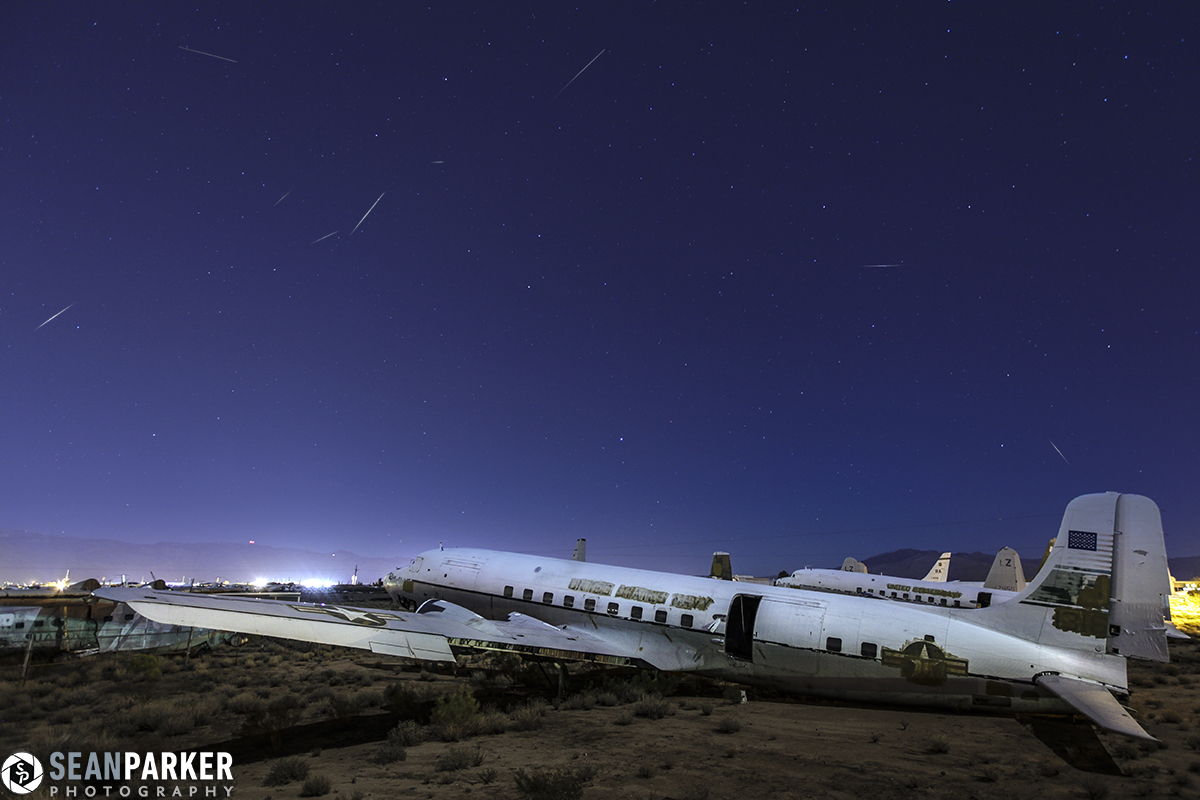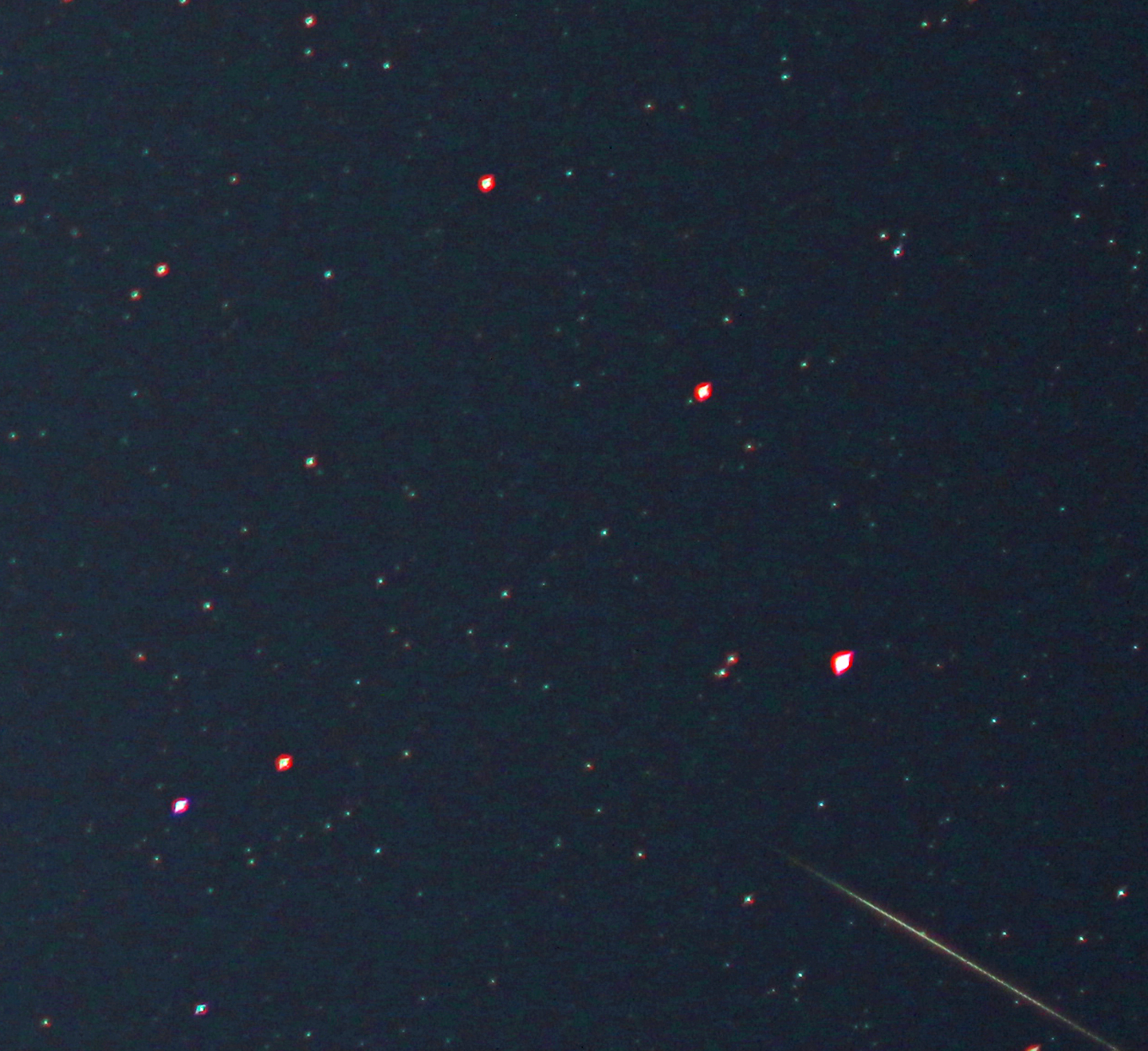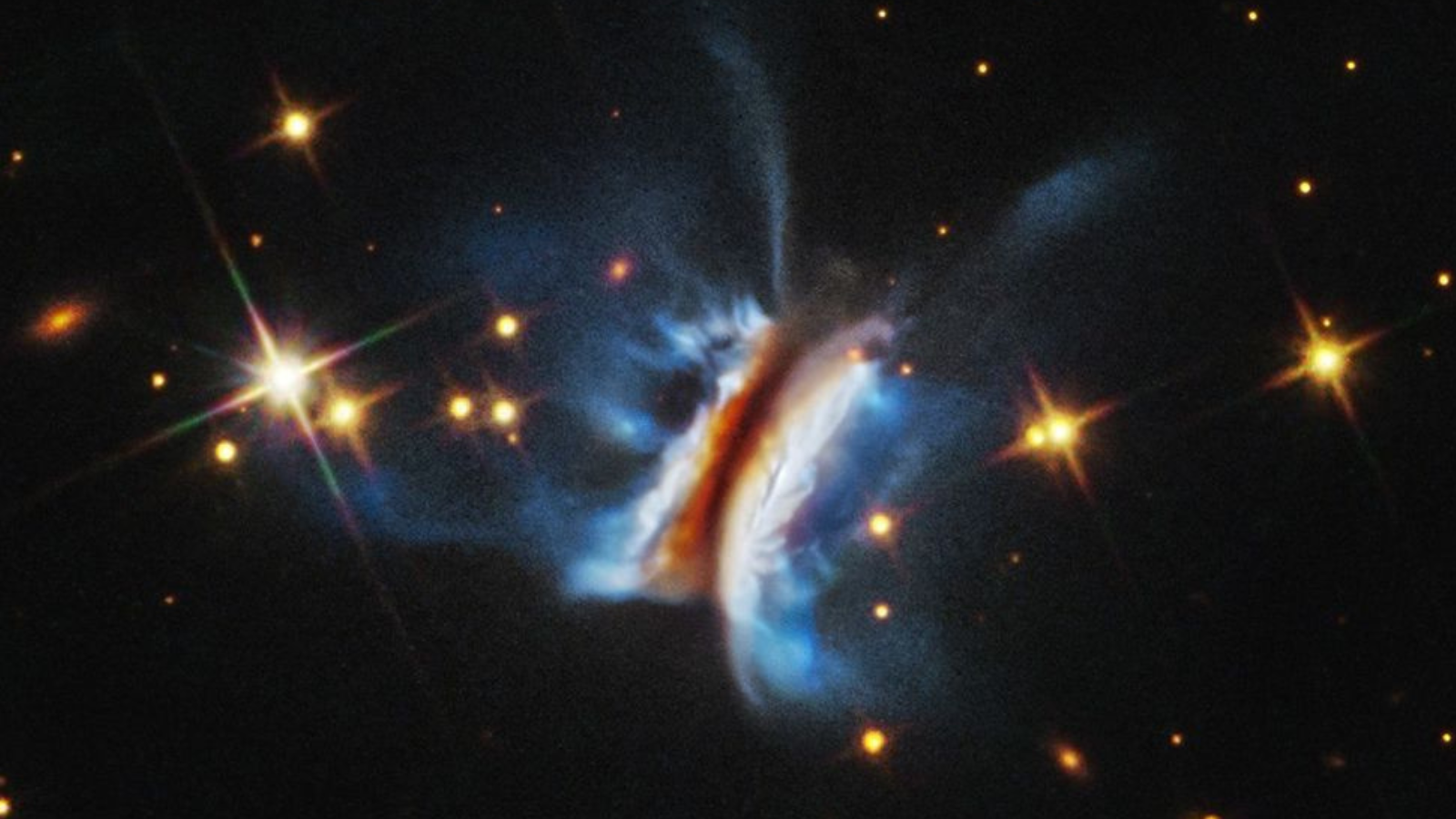Quadrantid Meteor Shower Wows Stargazers

Cold weather and a bright moon didn't stop skywatchers around the country from capturing stunning shots of the annual Quadrantid meteor shower this week.
Astrophotographer Victor Rogus, for example, snapped a dramatic image from Jadwin, Mo., a few hours before dawn today (Jan. 3) during the Quadrantids' peak. The streaking meteor seen in the photo appears in Ursa Minor, a constellation in the northern sky.
"Battling the cold and the gibbous moon was no easy task, but I managed to catch this meteor trail in a 12-second exposure with a Cannon 60Da astrophotography camera," Rogus told SPACE.com via email.
"I was out all night. I made nearly 500 exposures to the northeast, but saw only two bright ones, and a few faint under mostly clear, and transparent skies," Rogus added. "Glad to be in out of the cold!" [Stargazer Photos: Quadrantid Meteor Shower of 2013]
Veteran meteor observer John Chumack of Dayton, Ohio, set up a network of cameras to record the Quadrantid meteor shower's peak. The result was an eye-popping video of Quadrantid meteors as they streaked overhead, as well as toward the north, west and east.
"Last night the Quadrantid meteors started slamming into the Earth's atmosphere" Chumack said in an email. "I captured 52 Quadrantid meteors ... but it's not over yet. Keep watching as sometime you can see a few meteors for several days after the shower peak, too!"
Skywatcher Scott Tully also braved the cold early this morning to come up with a nice Quadrantid shot.
Breaking space news, the latest updates on rocket launches, skywatching events and more!
"I was out photographing the meteors this morning in the Northwest Hills of Connecticut," Tully wrote SPACE.com. "The meteor shower was beautiful against the moonlit sky, but with some clouds and the bright moonlight I was only able to spot a few bright streaks up until around 5:00 a.m. It was between the hours of 5 and 6 when the numbers started to pick up, and I caught this shot just before 6:00 a.m. EST."
On the outskirts of Tucson, Ariz., Sean Parker worked hard this morning to get a spectacular photo of Quadrantids streaking through the sky above a lot full of retired aircraft.
"The boneyard is run by the [Davis-Monthan] Air Force base which requires clearance, and is surrounded by 10-foot barbed wire fences," Parker wrote on his blog. "But fortunately I have a Jeep and a tall tripod — so I drove around numerous spots looking for a place I could pull my Jeep close to the fence and take pictures from on top. And I found one."
The Quadrantid meteor shower is a bright display seen mainly in the Northern Hemisphere around the beginning of the new year. The meteors appear to originate where the constellations Hercules, Boötes, and Draco meet in the sky.
The Quadrantids result when Earth plows through streams of debris shed by the asteroid 2003 EH1, which may actually be a chunk of a long-dead comet. Though the shower peaked overnight last night, it's still going on. NASA is providing a live webcast of the display through Friday (Jan. 4), which you can watch here on SPACE.com.
Editor's note: If you have an amazing photo of the Quadrantid meteor shower or any other night sky view that you'd like to share for a possible story or image gallery, send images, comments (including name and location) to managing editor Tariq Malik at spacephotos@space.com.
Follow SPACE.com for the latest in space science and exploration news on Twitter @Spacedotcom and on Facebook.
Nina Sen is a freelance writer and producer who covered night sky photography and astronomy for Space.com. She began writing and producing content for Space.com in 2011 with a focus on story and image production, as well as amazing space photos captured by NASA telescopes and other missions. Her work also includes coverage of amazing images by astrophotographers that showcase the night sky's beauty.



